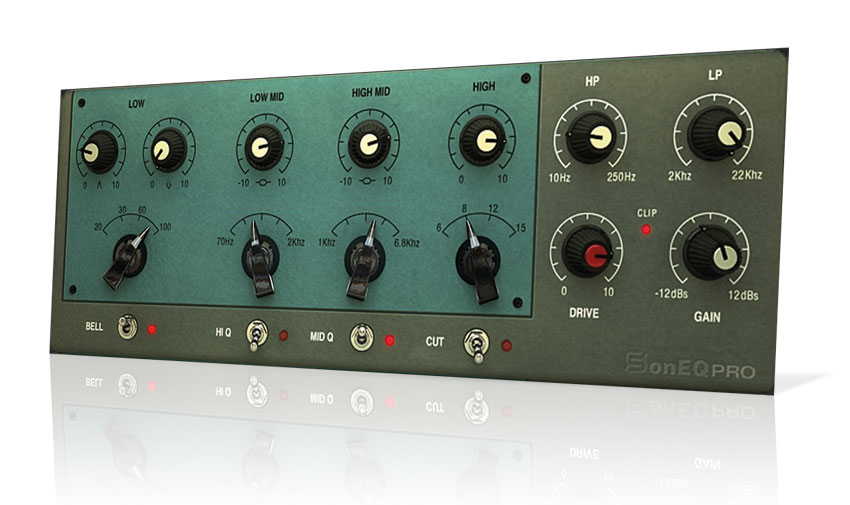MusicRadar Verdict
An impressive, affordable hybrid EQ that successfully jigsaws together a series of classic-inspired components.
Pros
- +
Great price. Sounds very sweet. Creative drive control. More flexible than a 1:1 emulation. Continuous frequency selection.
Cons
- -
No individual band bypass. No bell-shaped high frequency option.
MusicRadar's got your back
Sonimus' new plugin (VST/AU/RTAS) is a four-band virtual analogue EQ with high- and low-pass filters. Rather than emulate any specific piece of hardware, it's inspired by elements of a few classic EQs, bringing them together, Frankenstein-style, in one interface.
The models in question are the Pultec EQP-1A, Manley Massive Passive, API 550B and Neve 1073, with the high-shelf and low-pass filter from their own freebie, SonEQ, thrown in for good measure.
Some controls remind us of the emulated hardware - most notably the low shelving band, with its simultaneous boost and cut controls for Pultec-style low frequency boosting. The two bell-shaped mid bands have more traditional gain knobs (+/-10dB), while the main high band is shelving with boost only (+10dB).
"The frequency ranges for all bands but the High one are continuous, and each band has a modifying switch at the bottom adding further functionality"
However, SonEQ Pro boasts many other features beyond those basics. The frequency ranges for all bands but the High one (which is detented) are continuous, and each band has a modifying switch at the bottom adding further functionality.
For the low band, this switches to a boost-only bell (0-10dB) with adjustable Q; the two mid bands each get a narrower bandwidth option (Hi Q for Low Mid and Mid Q for High Mid); and the High band can be switched to Cut mode with four settings: low-pass (6dB/octave), high shelf with negative gain, and two that combine the low-pass with either positive or negative high shelves.
The main low-pass and high-pass filters are both 12dB/octave, and rounding things off is a two-stage saturation process.
Mix and match
Each of SonEQ Pro's bands has its own individual character. The high shelf is very gentle and sweet sounding - perfect for adding air. At its lowest setting (6kHz), its shallow slope means that it audibly affects frequencies from at least 2kHz up, so it's fantastic for overall sweetening.
Want all the hottest music and gear news, reviews, deals, features and more, direct to your inbox? Sign up here.
The two mid peaking bands are very different to each other. The High Mid is gentle, while the Low Mid is sharper, more aggressive and packs a little more maximum gain (12dB vs 10dB for the High Mid). You can push this behaviour further using the Q switches, but the High Mid still remains the gentler and broader of the two. With Hi Q activated, the Low Mid band becomes a rather surgical peak with about 15dB gain that's just the thing for notching or tight frequency boosting right down to 70Hz.
The Low band bell option is broader than the Low Mid, even at its highest Q setting. The Drive setting affects very low frequencies, so it's well geared up for tailoring kick drums, floor toms and bass guitar. As for the two main filters, the high-pass feels very smooth across the cutoff point with no frequency bump, and the low-pass goes right down to 2kHz and so has plenty of uses. Finally, the High band's Cut option is brilliant, offering four different but musical ways to curtail the top end.
Any problems? Well, we miss having a musical bell-shaped high band like that on the famous Pultec EQP-1A, and we'd love to see individual bypass buttons for each band, like on PSP's NobleQ. Aside from that, SonEQ Pro's mix and match approach delivers a flexible and highly individual EQ with a great sound at an unquestionably reasonable price.
Computer Music magazine is the world’s best selling publication dedicated solely to making great music with your Mac or PC computer. Each issue it brings its lucky readers the best in cutting-edge tutorials, need-to-know, expert software reviews and even all the tools you actually need to make great music today, courtesy of our legendary CM Plugin Suite.

